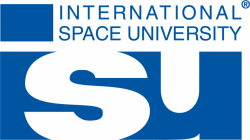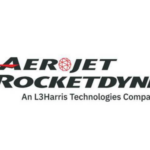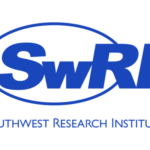Partner News
International Students to Track Airplanes From Space
Written by: developer
STRASBOURG, France (Sept. 24, 2010) – The International Space University – Balloon Air Traffic Control Experiment (I-BATE) is ready to launch from the Esrange Space Centre in the Swedish Arctic between 4 October and 9 October, 2010. The I-BATE will be one of several payloads onboard a stratospheric scientific balloon that will fly to the edge of space. From the balloon’s high-altitude vantage-point, 30-kilometers up, I-BATE will receive and relay to the ground ADS-B (Automatic Dependent Surveillance-Broadcast) signals from air traffic nearby for the duration of the balloon’s six- to eight-hour flight. Successful completion of this experiment could pave the way for a global space-based air traffic management system. The flight will be webcast live from the Esrange Space Centre at http://www.ustream.tv/channel/i-bate-launch-webcast. Live updates, photos, and video will be available on the I-BATE website at http://i-bate.isunet.edu/ over the course of the launch campaign.
(Sept. 24, 2010) – The International Space University – Balloon Air Traffic Control Experiment (I-BATE) is ready to launch from the Esrange Space Centre in the Swedish Arctic between 4 October and 9 October, 2010. The I-BATE will be one of several payloads onboard a stratospheric scientific balloon that will fly to the edge of space. From the balloon’s high-altitude vantage-point, 30-kilometers up, I-BATE will receive and relay to the ground ADS-B (Automatic Dependent Surveillance-Broadcast) signals from air traffic nearby for the duration of the balloon’s six- to eight-hour flight. Successful completion of this experiment could pave the way for a global space-based air traffic management system. The flight will be webcast live from the Esrange Space Centre at http://www.ustream.tv/channel/i-bate-launch-webcast. Live updates, photos, and video will be available on the I-BATE website at http://i-bate.isunet.edu/ over the course of the launch campaign.
The I-BATE team is composed of three masters students at the International Space University (ISU), Tom Nordheim (Norway), Richard Rieber (USA), and Yuval Brodsky (Canada/Israel). They have been designing, building, writing software for, and testing the experiment since October 2009. All major hardware has been assembled and all software is complete with a few tests remaining before launch.
The team will arrive at Esrange Space Center, inside the Arctic Circle in Sweden on 1 October to finalize integration with the balloon and conduct final pre-flight tests. The launch window opens on 4 October and extends through 9 October, due to the unpredictable weather in the Swedish Arctic.
The balloon will fly to an altitude of roughly 30-kilometers and will be able to track aircraft up to 700-kilometers away. I-BATE is equipped with an ADS-B receiver generously provided by the London-based Kinetic Avionic Products Ltd. (http://www.kinetic-avionics.com/). The balloon and launch services are provided through the Balloon Experiments for University Students (BEXUS) Programme. The BEXUS programme (www.rexusbexus.net) is realised under a bilateral Agency Agreement between the German Aerospace Center (DLR) and the Swedish National Space Board (SNSB). The Swedish share of the payload has been made available to students from other European countries through a collaboration with the European Space Agency (ESA).
I-BATE would sincerely like to thank the following sponsors: Kinetic Avionic Products Limited, OSEO, Celltech, Wind River, Barbara and Peter Wood, Shandy Asturias, Andrew Browne and one anonymous donor from the ISU Board of Trustees. Furthermore, the realisation of this project would not be possible without the support of the following partners: ESA, DLR, SNSB, SSC, EuroLaunch, the faculty and staff at ISU, especially Dr. Angie Bukley, Mr. Paulo Esteves, and Mr. Raphael Garcia; and Jason Lee and Jesse Chavez at the Jet Propulsion Laboratory.
###
I-BATE contact:
Yuval Brodsky PR Director, Team I-BATE
+1 905 334 5374 (CAN)
+31 (0)6 26 40 81 36 (NL)
[email protected]
ISU Press Relations:
Caroline Schwob External Relations Manager International Space University
1 rue Jean-Dominique Cassini 67400 Illkirch-Graffenstaden France
Tel: 03 88 65 54 55 Fax: 03 88 65 54 47
This announcement, made by a Space Foundation partner, sponsor or exhibitor, is posted for information purposes only and does not constitute an endorsement of the products, services, events, or companies it covers.


